Related Research Articles

The 1898 VFL season was the second season of the Victorian Football League (VFL), the highest-level senior Australian rules football competition in Victoria. The season featured eight clubs and ran from 14 May to 24 September, comprising a 14-round home-and-away season followed by a finals series featuring all eight clubs.

The 1899 VFL season was the third season of the Victorian Football League (VFL), the highest-level senior Australian rules football competition in Victoria. The season featured eight clubs and ran from 13 May to 16 September, comprising a 14-round home-and-away season followed by a finals series featuring all eight clubs.

The 1901 VFL season was the fifth season of the Victorian Football League (VFL), the highest-level senior Australian rules football competition in Victoria. The season featured eight clubs and ran from 4 May to 7 September, comprising a 17-round home-and-away season followed by a two-week finals series featuring the top four clubs.

The 1907 VFL season was the eleventh season of the Victorian Football League (VFL), the highest-level senior Australian rules football competition in Victoria. The season featured eight clubs and ran from 27 April to 21 September, comprising a 17-match home-and-away season followed by a three-week finals series featuring the top four clubs.
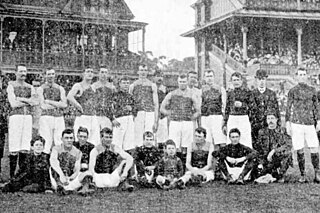
The 1908 VFL season was the twelfth season of the Victorian Football League (VFL), the highest-level senior Australian rules football competition in Victoria. The season featured ten clubs and ran from 2 May to 26 September, comprising an 18-match home-and-away season followed by a three-week finals series featuring the top four clubs. Victorian Football Association (VFA) club Richmond and Metropolitan Junior Football Association (MJFA) club University featured for the first time in 1908.
The 1958 VFL season was the 62nd season of the Victorian Football League (VFL), the highest level senior Australian rules football competition in Victoria. The season, contested by twelve clubs, ran from 12 April until 20 September, and comprised an 18-game home-and-away season, followed by a finals series involving the top four clubs.
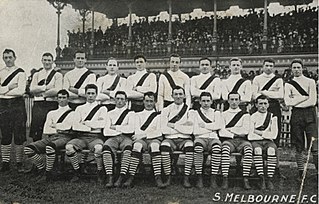
The 1909 VFL season was the 13th season of the Victorian Football League (VFL), the highest-level senior Australian rules football competition in Victoria. The season featured ten clubs and ran from 1 May to 2 October, comprising an 18-match home-and-away season followed by a four-week finals series featuring the top four clubs.

The 1915 VFL season was the 19th season of the Victorian Football League (VFL), the highest-level senior Australian rules football competition in Victoria. The season featured nine clubs and ran from 24 April to 18 September, comprising a 16-match home-and-away season followed by a four-week finals series featuring the top four clubs.
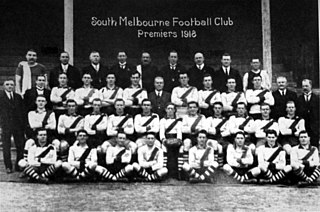
The 1918 VFL season was the 22nd season of the Victorian Football League (VFL), the highest-level senior Australian rules football competition in Victoria. Played during the final year of World War I, eight of the league's nine clubs featured in 1918, with Essendon and St Kilda returning after being in recess the previous two seasons and only Melbourne absent. The season ran from 11 May to 7 September, comprising a 14-match home-and-away season followed by a three-week finals series featuring the top four clubs.

The 1921 VFL season was the 25th season of the Victorian Football League (VFL), the highest-level senior Australian rules football competition in Victoria. The season featured nine clubs and ran from 7 May to 15 October, comprising a 16-match home-and-away season followed by a four-week finals series featuring the top four clubs.
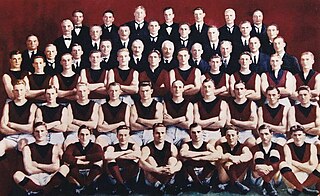
The 1922 VFL season was the 26th season of the Victorian Football League (VFL), the highest-level senior Australian rules football competition in Victoria. The season featured nine clubs and ran from 6 May to 14 October, comprising a 16-match home-and-away season followed by a four-week finals series featuring the top four clubs.
The 1962 VFL season was the 66th season of the Victorian Football League (VFL), the highest level senior Australian rules football competition in Victoria. The season featured twelve clubs, ran from 21 April until 29 September, and comprised an 18-game home-and-away season followed by a finals series featuring the top four clubs.

The 1936 VFL season was the 40th season of the Victorian Football League (VFL), the highest level senior Australian rules football competition in Victoria. The season featured twelve clubs, ran from 2 May until 3 October, and comprised an 18-game home-and-away season followed by a finals series featuring the top four clubs.

The 1937 VFL season was the 41st season of the Victorian Football League (VFL), the highest level senior Australian rules football competition in Victoria. The season featured twelve clubs, ran from 24 April until 25 September, and comprised an 18-game home-and-away season followed by a finals series featuring the top four clubs.

The 1939 VFL season was the 43rd season of the Victorian Football League (VFL), the highest level senior Australian rules football competition in Victoria. The season featured twelve clubs, ran from 22 April until 30 September, and comprised an 18-game home-and-away season followed by a finals series featuring the top four clubs.

The 1940 VFL season was the 44th season of the Victorian Football League (VFL), the highest level senior Australian rules football competition in Victoria. The season featured twelve clubs, ran from 27 April until 28 September, and comprised an 18-game home-and-away season followed by a finals series featuring the top four clubs.
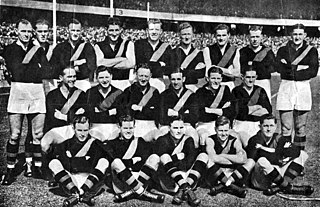
The 1946 VFL season was the 50th season of the Victorian Football League (VFL), the highest level senior Australian rules football competition in Victoria.
The 1947 VFL season was the 51st season of the Victorian Football League (VFL), the highest level senior Australian rules football competition in Victoria. The season featured twelve clubs, ran from 19 April until 27 September, and comprised a 19-game home-and-away season followed by a finals series featuring the top four clubs.
The 1971 VFL season was the 75th season of the Victorian Football League (VFL), the highest level senior Australian rules football competition in Victoria. The season featured twelve clubs, ran from 3 April until 25 September, and comprised a 22-game home-and-away season followed by a finals series featuring the top four clubs.
The 1972 VFL season was the 76th season of the Victorian Football League (VFL), the highest level senior Australian rules football competition in Victoria. The season featured twelve clubs, ran from 1 April until 7 October, and comprised a 22-game home-and-away season followed by a finals series featuring the top five clubs – an increase from the four clubs which had contested the finals in previous years.
References
- Hogan, P., The Tigers of Old, The Richmond Football Club, (Richmond), 1996. ISBN 0-646-18748-1
- Rogers, S. & Brown, A., Every Game Ever Played: VFL/AFL Results 1897–1997 (Sixth Edition), Viking Books, (Ringwood), 1998. ISBN 0-670-90809-6
- Ross, J. (ed), 100 Years of Australian Football 1897–1996: The Complete Story of the AFL, All the Big Stories, All the Great Pictures, All the Champions, Every AFL Season Reported, Viking, (Ringwood), 1996. ISBN 0-670-86814-0
- 1933 – Round 5 St Kilda v North Melbourne – 15 men defeat 18 – BoylesFootballPhotos
- 1933 ANFC Sydney Carnival – BoylesFootballPhotos
- Full Points Footy: 1933 Sydney Carnival [usurped]